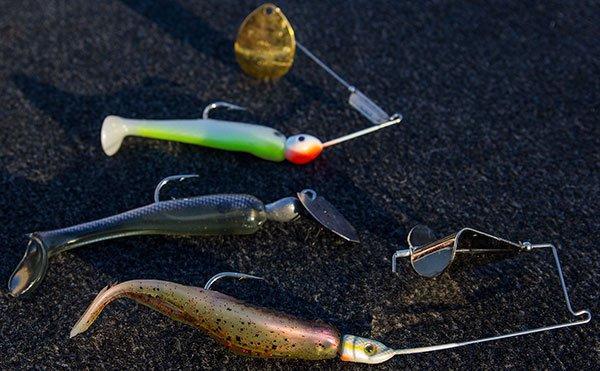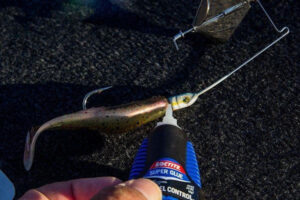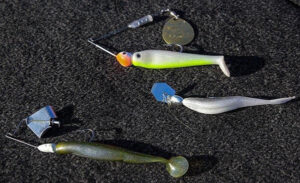Bass will eat something if you put it in front of them. At least that’s the trap we find ourselves falling for in our game planning for our day on the water. How do we know what to fish from day to day, season to season? It’s experience, trial and error, seasonal situations and more that lead us to the bass. And even then it can be a chore to find fish. A couple things anglers tend to forget are profile and pressure.
The pressure fish see from anglers, boat traffic, weather conditions and other variables changes their behavior as each season progresses. The more worms and crankbaits they see pass in front of their nose, the more they resist their impulses and ignore them. The profile of a lure is the easiest thing for bass to condition to. And it can be the easiest thing for an angler to change to get more bites.
Think about this scenario. The bass grouped up in an area. You catch them on a jig but they won’t touch a plastic worm. Then you go to another area where they are grouped up but you catch them on the plastic worm and they won’t touch your jig. Seems hard to explain other than the fish got conditioned in each area. Maybe fishing pressure did it. Maybe the type of forage in the area did. Maybe the conditions did but profile matters, and in certain situations, one profile is wrong.
We’ve delved into the topic of lure profile before, but you can take the standard profile of certain lures and change it with easy modifications and catch fish others miss. Spinnerbaits, vibrating jigs, and buzzbaits all have one thing in common—a silicone or rubber skirt. The skirt gives the lures bulky pulsating profiles.
In recent years, we’ve seen anglers like Bryan Thrift pull the skirts off these type baits and catch a lot of bass from areas other anglers have recently fished. He’s known to put a bait like a Zoom Horny Toad on a buzzbait to catch bass. I watched him throwing it on Pickwick and also in the Forrest Wood Cup on the Three Rivers in Pittsburgh to catch some key fish.
We’ve experimented with the profile changes and have had a lot success changing out spinnerbait skirts for grubs and swimbaits, ChatterBaits with minnow type bodies and buzzbaits with grubs and soft plastic toads. The change in profiles gives the bait a different action and appearance in the water. Makes them easier to cast to tight targets or skip under cover.
One tip:
use Super Glue or Loc Tite to secure your soft plastics to the head of vibrating jigs, spinnerbaits and buzzbaits. You can fish all day this way without having to constantly fix your baits on the heads.
In smaller bodies of water when you often downsize your tackle, taking the skirt of a small spinnerbait or chatterbait and threading a Zoom Fluke Jr. on it can be a deadly presentation and surprisingly get you a lot of bites in tough conditions. Likewise with a small buzzbait.
You can change the profile of skirted baits to get more bites but as we said, they can be easier to fish too. A chatterbait with a swimbait on its body skips well. You can fire it under low hanging limbs or under and around docks. A Horny Toad on a buzzbait helps keep the buzzbait up and it seems to glide over grass a little better. You can make a spinnerbait look more like a fish head spin with a minnow type body on the head in clear water.
Simple changes can often yield big results. The fish see a lot and making them comfortable enough to eat around your lures makes them more likely to bite. The natural profile of the baits gives them more appeal to pressured and weary bass. Downsize and go natural and use the vibration and flash to draw them in and the natural profile to make them commit.













